Goliath was approximately four feet long, two feet wide, one foot tall and weighed about 650 pounds.
Despite its appearance, the Goliath is not a tank.
It was, however, an innovative way to deliver an explosive charge to a pin-point target.
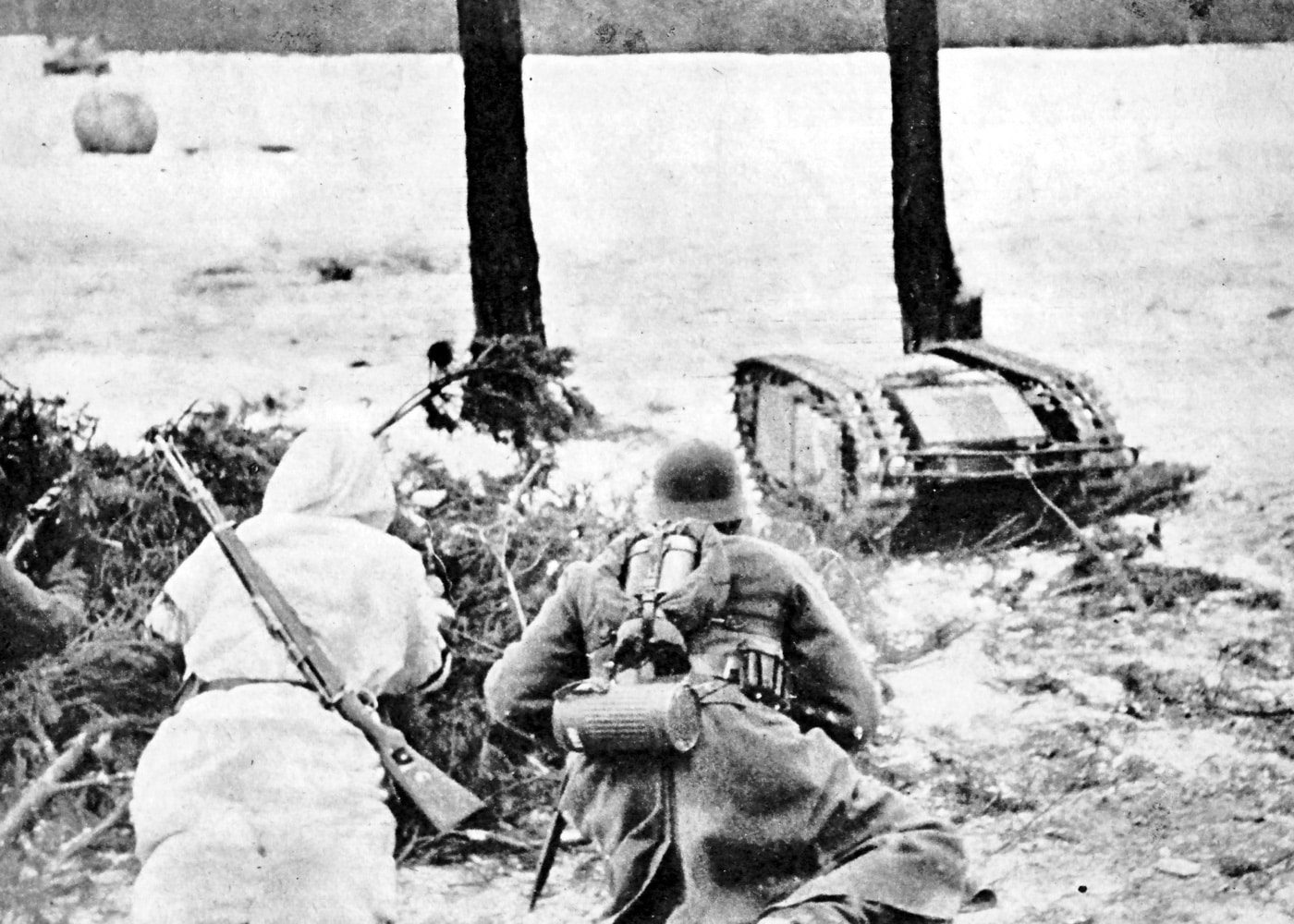
A German operator sends the Goliath on its way to the target. Image: Patton Museum
After more than a year of development, the initial version (Sd.
- of the Goliath was ready in early 1942.
Even so, approximately 2,600 of the electrically powered Goliath were built, with production terminating in 1944.
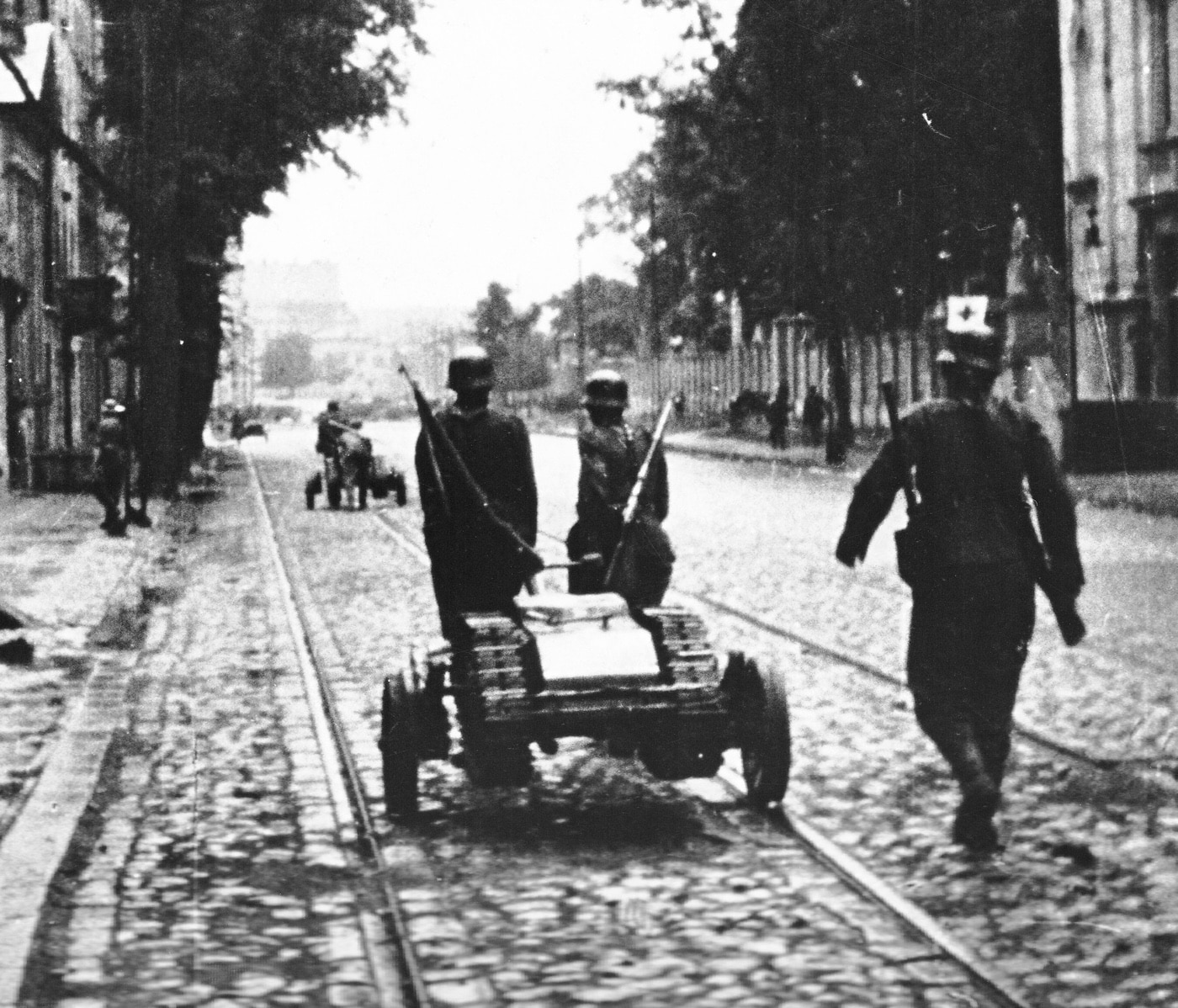
A German Goliath is being towed on its trailer by a pair of soldiers on the Eastern Front. Image: Patton Museum
Goliath could carry its 60kg explosive charge nearly half a mile at up to 7 miles per hour.
In that light, it was best for a Goliath operator not to become too attached to his vehicle.
A second, less expensive version of the Goliath (Sd.
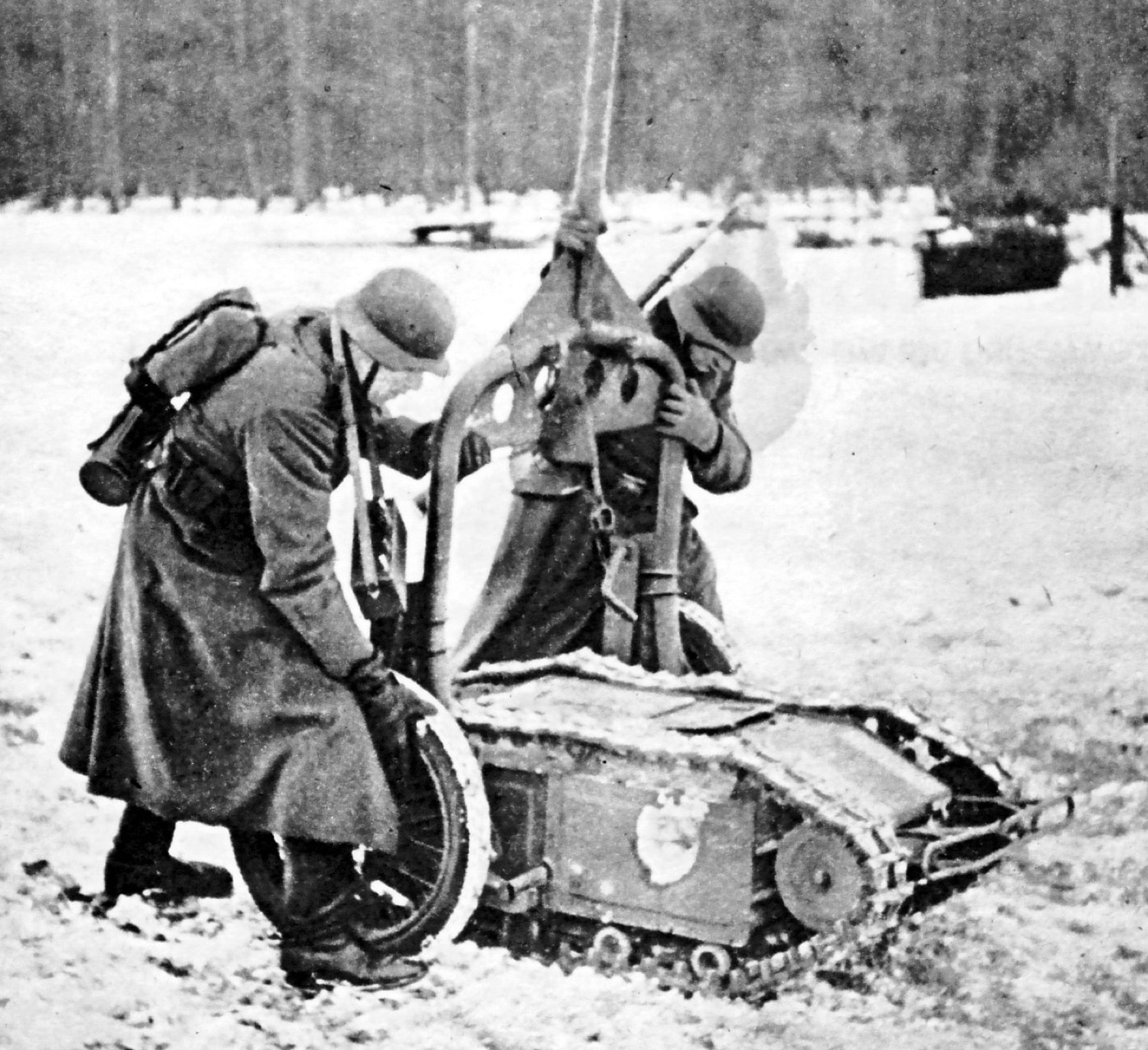
German troops wheel the Goliath into position to deploy it against Soviet forces in Russia. Image: Patton Museum
- was created and was driven by a two-stroke Zundapp gasoline engine.
This gave Goliath a slight increase in power, and its explosive charge was increased to a respectable 100kg.
The range was also increased, allowing Goliath to travel up to almost 34 mile from its controller.
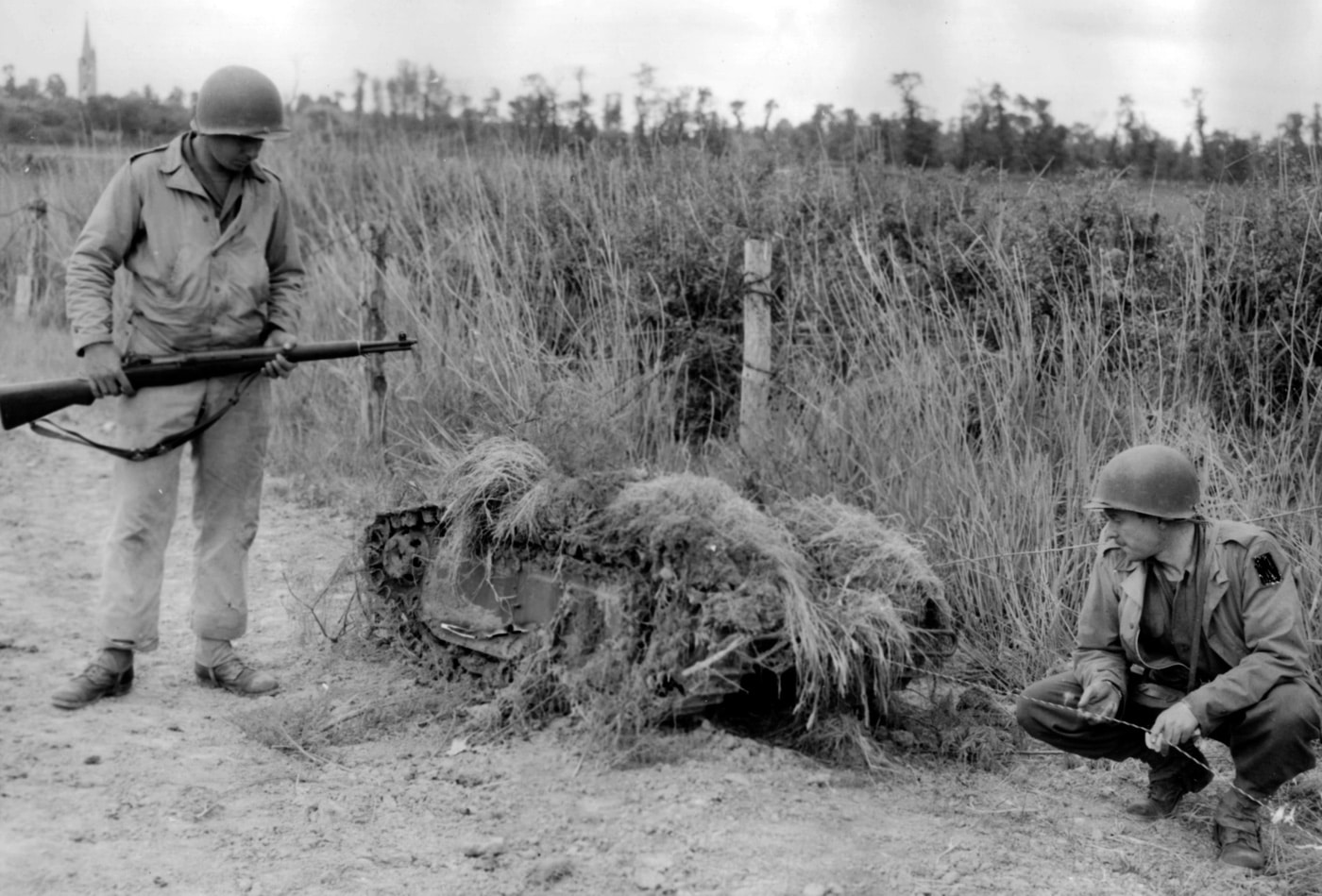
U.S. troops inspect a German Goliath captured in Normandy in late June 1944. Image: Author’s collection
Production of the gasoline-powered Goliath lasted from April 1943 until January 1945 and totaled approximately 4,900 units.
A simple, two-wheeled trailer was provided to move the Goliath into position normally pulled by two men.
As the vehicle was rather slow, opposing infantry could mass small arms fire on the approaching Goliath.
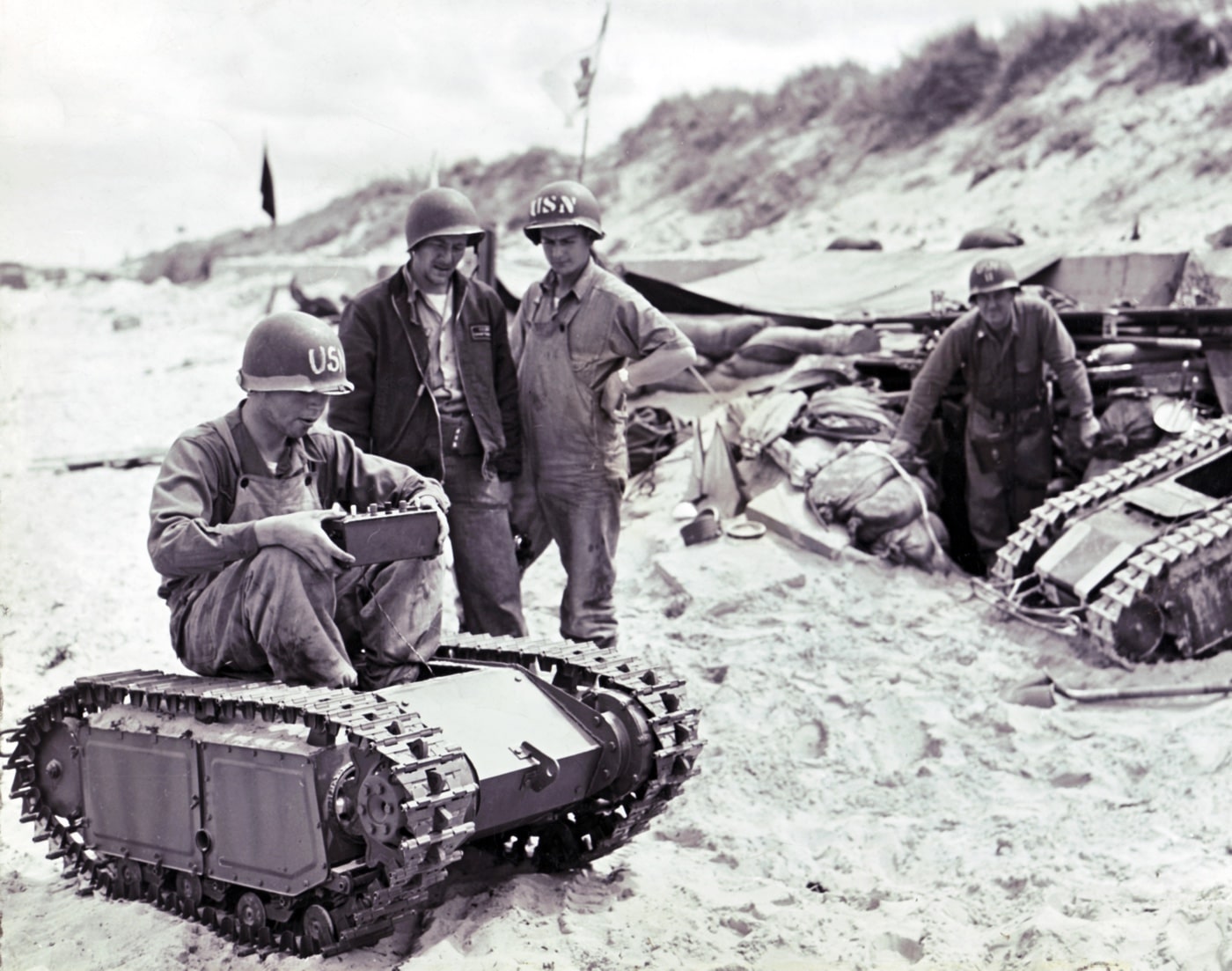
U.S. sailors, part of a Naval Beach Battalion, examine several Goliath tracked mines on the Normandy beach. Image: NARA
The Germans used Goliath on all fronts except North Africa without any notable success.
Apparently, most of the Goliaths set up in this way were knocked out by Allied naval bombardment.
It is protected by sloping 9mm armor plate, set at 48 and 5O degrees to the vertical.
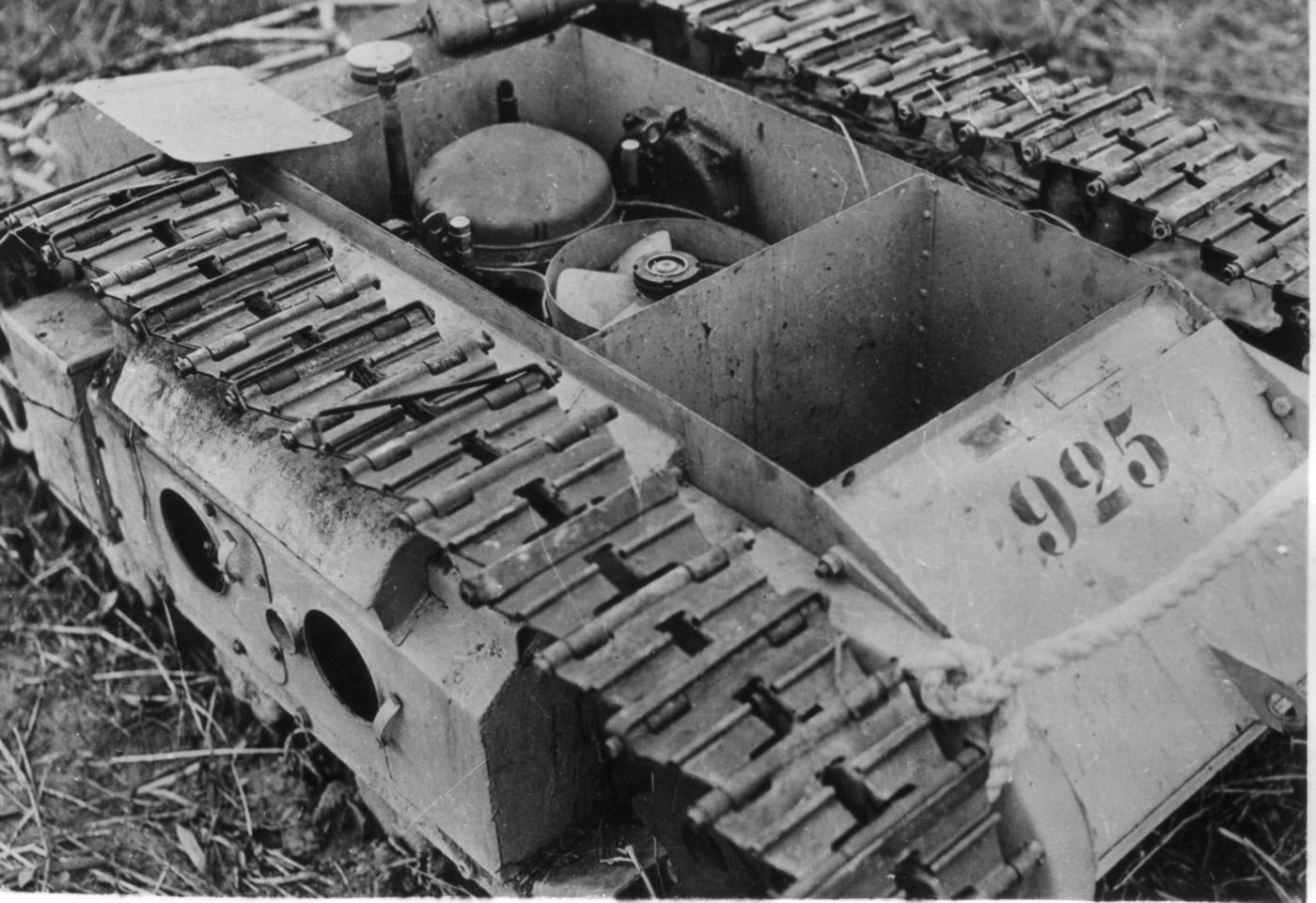
The guts of a Goliath, captured somewhere in France during the summer of 1944. Image: NARA
The hull contains three compartments.
Steering is accomplished by breaking the circuit to the side to which the turn is to be made.
This releases the magnetic clutch cutting the power from the engine for that side of the vehicle.
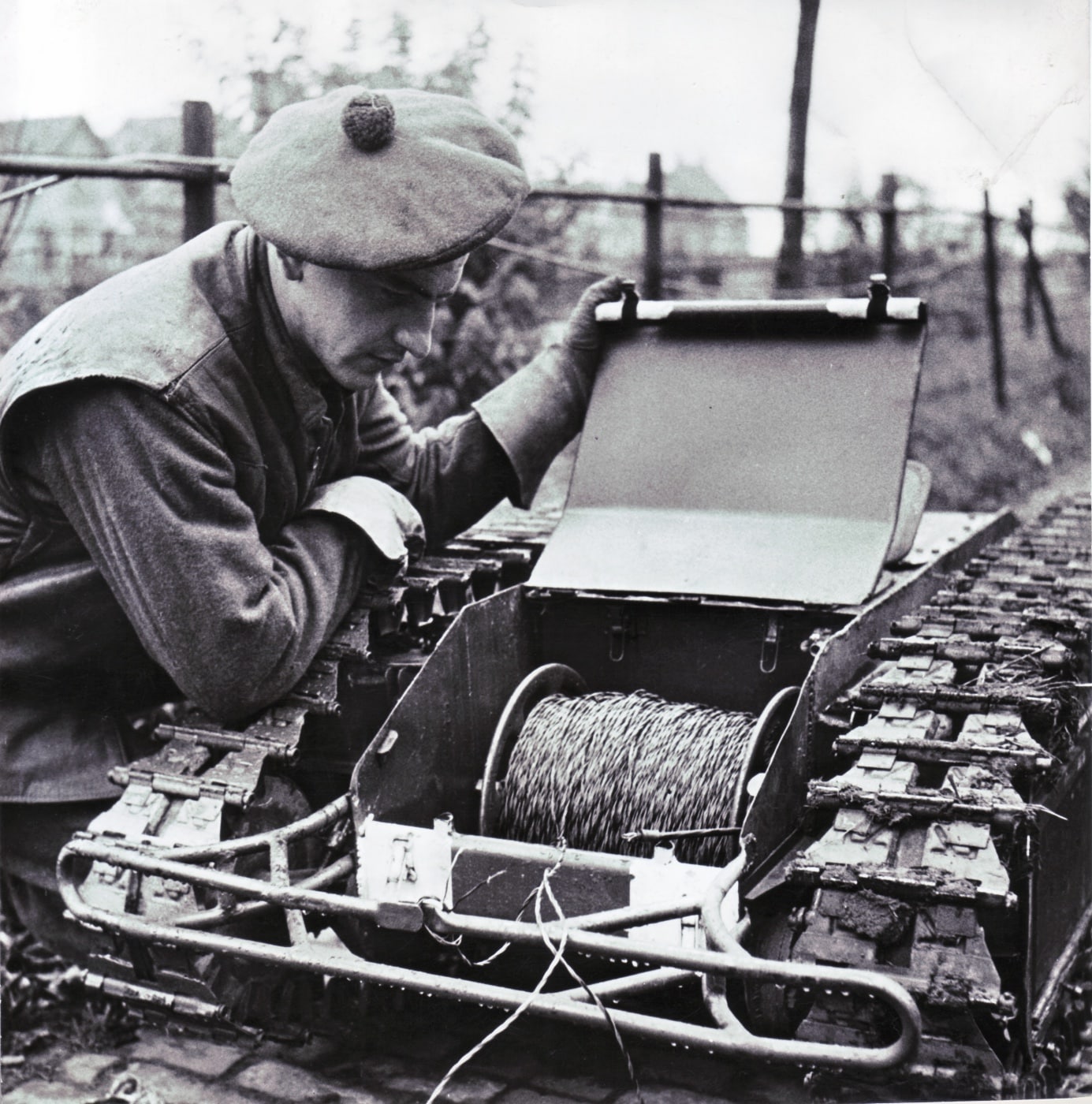
A Canadian soldier looking over the spool for the control cables of a remotely controlled Goliath tracked anti-tank mine. Image: NARA
Each bogie is independently sprung by coil springs.
The chain driven sprocket is at the front of the vehicle.
The track is 6 5/16th inches wide, with a simple grouser placed on every other track pin.
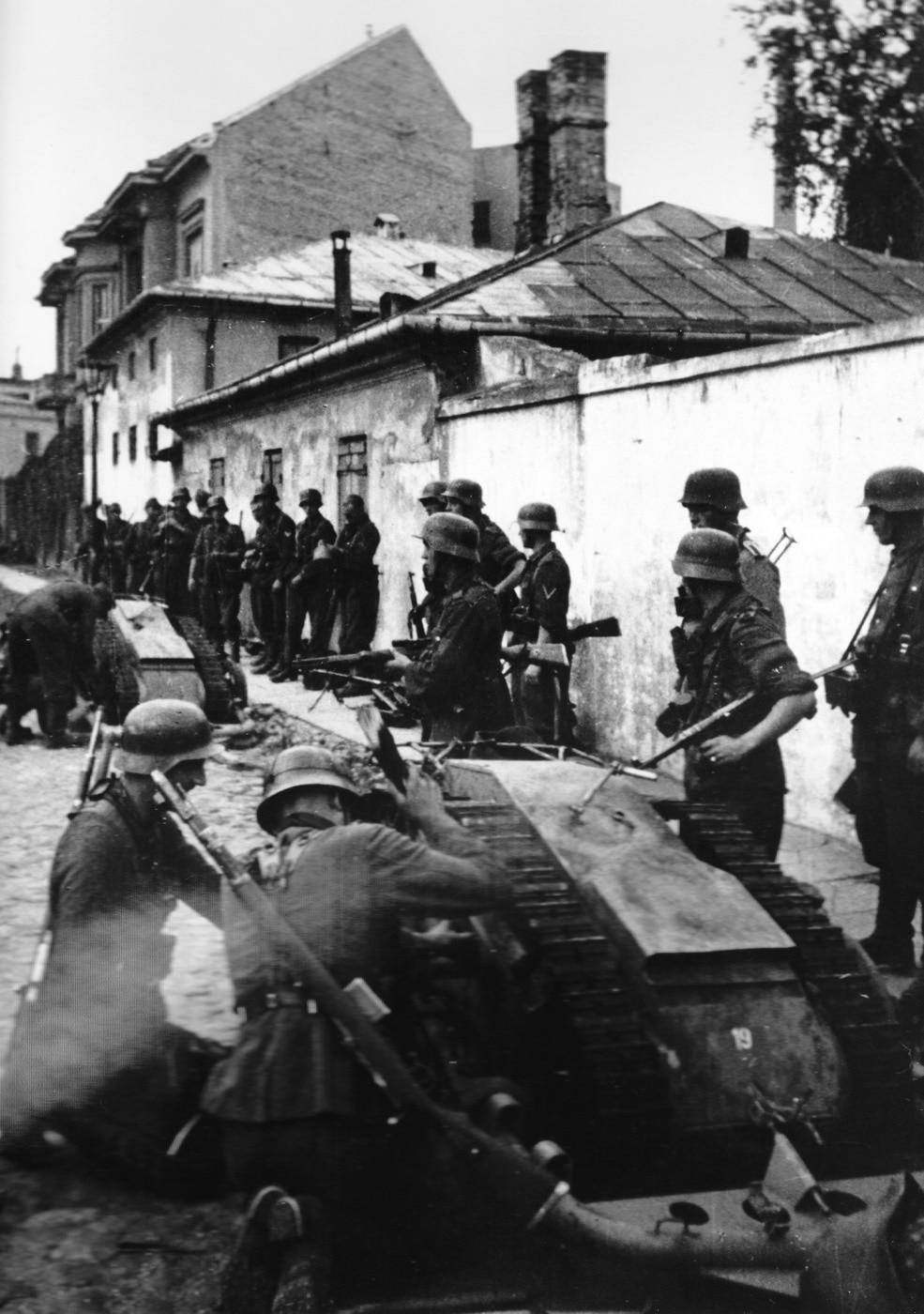
German troops work on a Goliath that is on a trailer. The man in the foreground has a relatively rare Gewehr 41 semi-auto rifle. Image: Patton Museum
The vehicle has sufficient power to operate on practically any bang out of terrain.
The vehicle carries between 100 to 125 pounds of explosives.
The high-tech electronics of WWII seem particularly simplistic now.
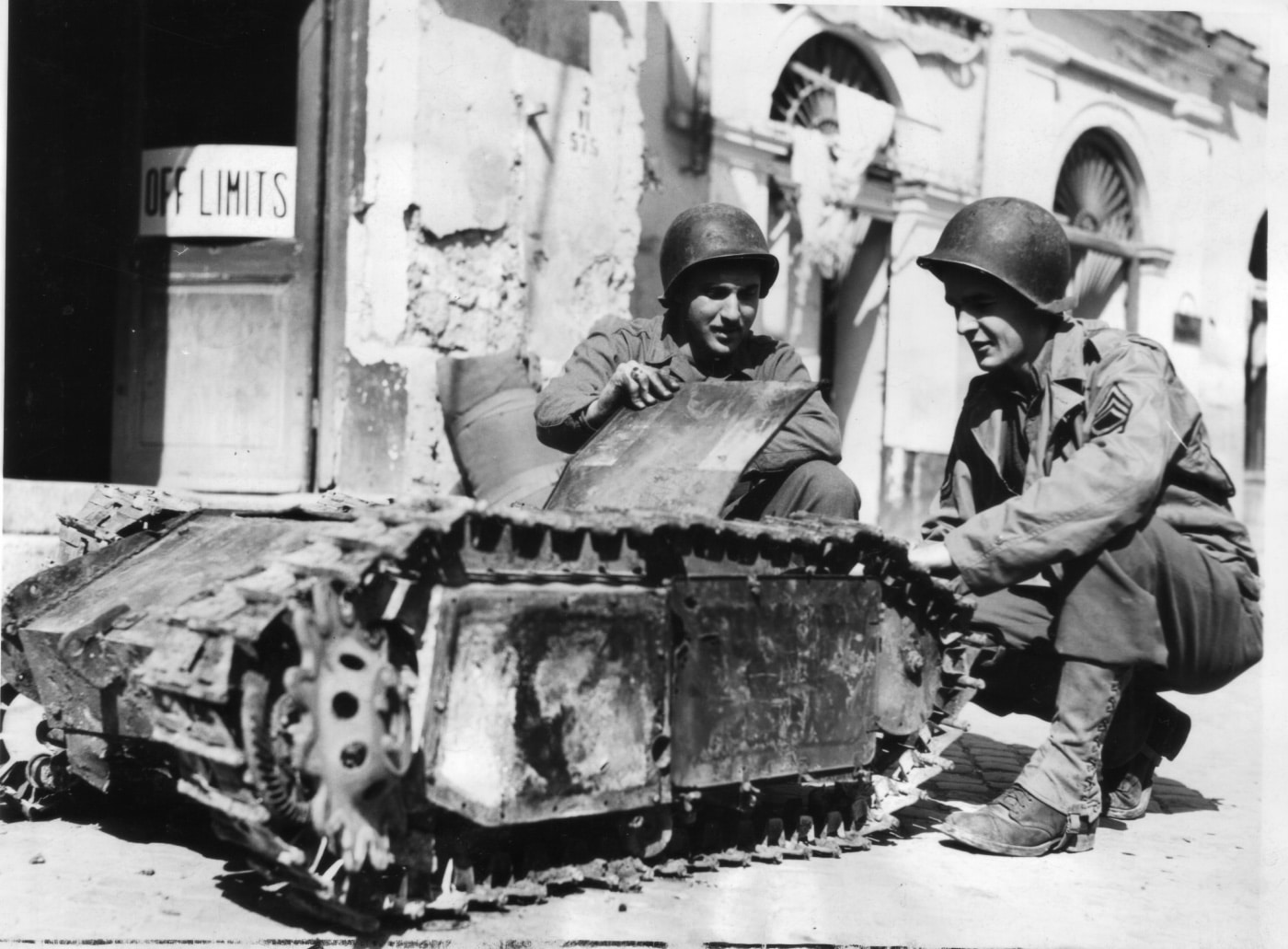
U.S. troops examine a wrecked German Goliath. This one was knocked out during the fighting around Anzio, south of Rome. Image: NARA
Conclusion
Goliath was gone after World War II, but the concept was not forgotten.




